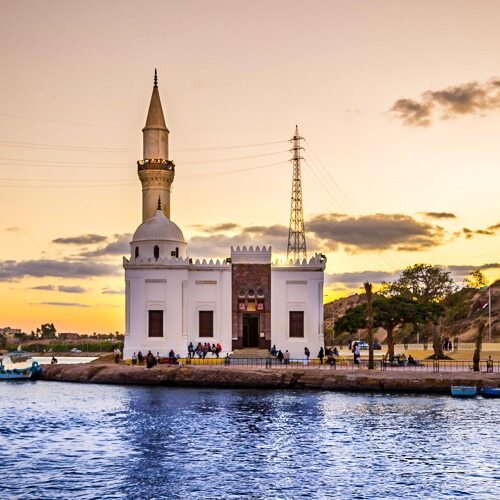No other nation in the world says ‘Welcome’ as often as the Egyptians, and every time, they mean it. While the ancient civilization of Egypt continues to amaze, contemporary Egyptians are equally remarkable.
Past and Present Rosetta
Rosetta (Rasheed): A Chronicle of Civilizations and Cultures
Rosetta, known in Arabic as Rasheed, stands as a testament to the rich tapestry of Egypt’s history. This site, continuously inhabited since the times of Ancient Egypt, has been a silent witness to the march of empires and the ebb and flow of cultures.
From Khito to Bolbitine: A Journey Through Time
Originally christened Khito, a term derived from hieratic script meaning “the populace,” this town thrived under the reign of the legendary Pharaoh Menes. As the Ptolemaic era dawned, it embraced a new identity as Bolbitine, named after one of the seven branches of the Nile famously mentioned by Herodotus. This era marked a significant transformation, setting the stage for the town’s future evolution.
Christian Era and Abbassid Fortification
With the advent of Christian Egypt, Rosetta was again renamed, this time adopting the Coptic vernacular as (t-)Rashit/Rakhit/Rexi. The 850s heralded another key chapter in its history when the Abbassid Caliphate, recognizing its strategic importance, constructed a fort atop the remnants of the Ptolemaic city. The ensuing medieval city, enveloping this fort, became the backdrop for numerous historical events, notably the brief occupation by France’s Louis IX during the Seventh Crusade in 1249.
Rosetta's Commercial Prowess
In the Mameluke era, Rosetta ascended as a vital commercial hub, a status it proudly retained throughout the Ottoman rule. Its commercial prominence was only overshadowed in the early 19th century when Alexandria emerged as a dominant port following the construction of the Mahmoudiyah canal in 1820. Despite this, Rosetta remained a key player in historical events, witnessing the significant British Fraser campaign defeat on 19th September 1807.
Created On March 18, 2020
Updated On July, 2025



